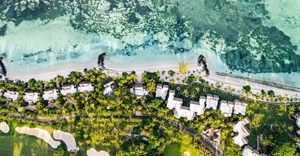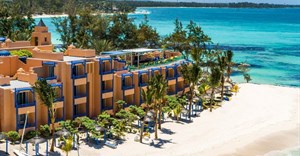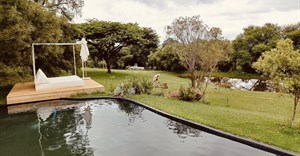Visiting natural Nairobi
“The gardens are stunning,” general manager (and offshore operations director) Andrew Hosking says of the hotel’s five-acre site. “It’s is one of our unique selling points and what differentiates us from most other hotels in Nairobi, and probably most other hotels in Africa to a large extent. It really is a beautiful property.”
But being in such a tropical setting (and at a time of the year when most people from the city flock upcountry to the villages or to the coastal paradises at the shore) hasn’t stopped some corporate warriors from choosing the restaurant for their morning meetings. Two businessmen are laughing between sips of masala tea while another hunches over a newspaper. Meanwhile, a French family is planning their day.
“There are quite a lot of tourist attractions,” says Hosking, who recently relocated from Dubai. “But for me, one of the most appealing things about Nairobi is that it’s a bustling hub in Africa, which has still not been overtaken by external influences.”
Indeed, while some of the city’s architecture is reminiscent of the country’s status as a British colony until independence in 1963, Nairobi maintains its sense of Africa. It’s no wonder that the city, whose name comes from a Maasai phrase that translates as “cool water”, has earned the nickname “Green City in the Sun” considering how well it has preserved its natural beauty.
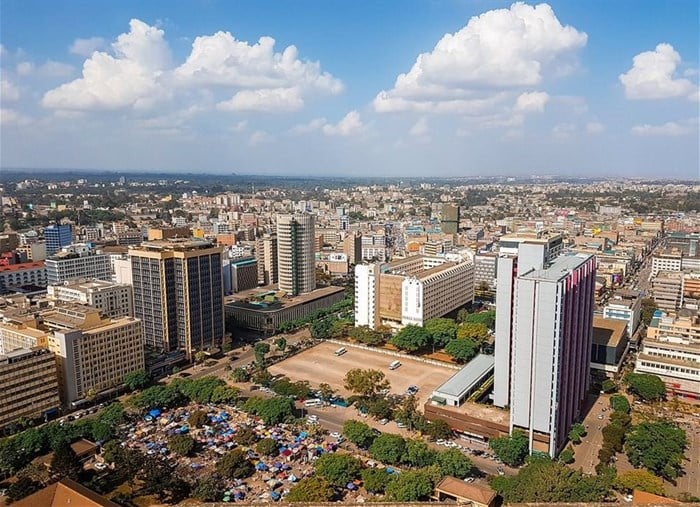
A highlight is the 117km2 Nairobi National Park, the world’s only game reserve in a major city. It features over 100 species of mammal – including rhino, buffalo, giraffe, lion, leopard, baboon, zebra, wildebeest, and cheetah – as well as over 400 species of endemic and migratory birds.
And with its facilities available for activities ranging from corporate events and teambuilding sessions to picnic lunches and dinners in the bush, it’s the kind of place that deserves a full day of your time.
In the same area, and also under the administration of the Kenya Wildlife Service, is the Nairobi Animal Orphanage. Established in 1964 as a refuge and rehabilitation centre for wild animals, visitors can get a close-up of a variety of abandoned or injured animals that are being nursed back to health: lions, cheetahs, hyenas, jackals, serval cats, Sokoke cats, warthogs, leopards, monkeys, baboons, buffalos, and more.
It also features several types of birds, including parrots, guinea fowls, ostriches, and crowned cranes. Of course, whether a visit here feels appropriate in light of the protests against wildlife tourism is up to each individual to decide for themselves.
In Karen, an upmarket suburb where endless rows of thick hedges hide luxury homes is the Daphne Sheldrick Elephant Orphanage. Founded in 1977 in honour of her late husband – David Sheldrick was a naturalist and founding warden of the Tsavo East National Park – it is open to the public for only an hour a day so it’s best to plan ahead if you want to watch the calves being fed.
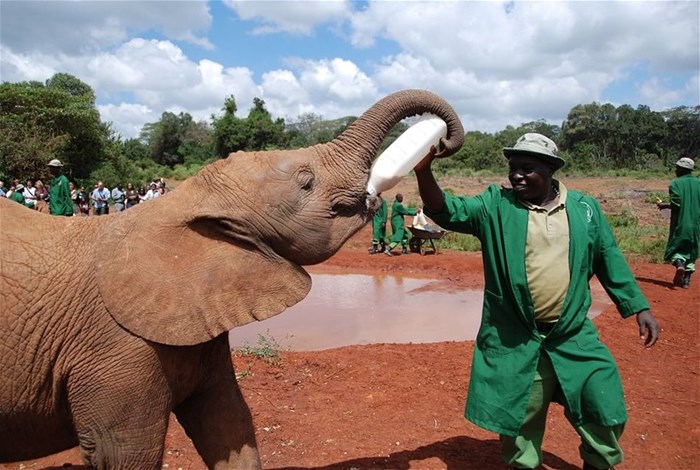
“There are many places to go and visit,” Hosking says. “From a cultural point of view, I think there’s a strong affinity for art within Kenya. The old forms of communication – storytelling, paintings, music – are quite strong here. I find Kenyans more in touch with culture than the people I’ve typically met elsewhere.”
The highlight in this regard is the Bomas of Kenya, a cultural village mandated to preserve, maintain, and promote the rich and diverse cultural values of the country’s 42 tribal groups. In addition to an upbeat performance that boasts a wide range of music and dance, it features an extensive display of different living styles from various ethnicities, complete with the occasional warthog (or family of four) wandering the grounds.
For art lovers, Matbronze in Karen boasts one of the largest displays of wildlife bronzes in Africa (over 600 pieces) and features an onsite café for a relaxed outdoor meal. It’s a great way to fuel up ahead of a visit to the area’s most popular attraction and the reason for its name: the Karen Blixen Museum.
This is the former home of the Danish author whose memoir “Out of Africa” became the film that won seven Academy Awards in 1985. The guided tour offers a fascinating insight into her life in Kenya from 1917 to 1931 and includes well-preserved original artefacts and memorabilia from the time.

“I think one of the unique things about Kenya is the people,” Hosking says. “Every foreign person that I’ve met here, including myself, can’t get over how friendly, warm, and welcoming Kenyans are to everybody else.”
It’s easy to see what he means. During our late afternoon lunch at Tamambo, a restaurant at the nearby Karen Blixen Coffee Gardens (and location of the original hunting lodge/farmhouse built between 1906 and 1908), the waitron wrapped us in traditional Maasai blankets; not because we were cold but as a way to welcome us to the restaurant. With that kind of hospitality and range of tasty food, it’s not surprising that it’s voted as one of Nairobi’s best places to eat.
“We’ve always wanted to come to Kenya so for us it was a no-brainer,” Hosking says. “Not only the city, but also the country, has a lot of appeal. I’ve been here for three months and I’m still getting to know Nairobi. It’s a journey of discovery.”

Indeed, Nairobi has changed a lot since it was founded as a railway town in 1899 to connect Kampala, the capital of Uganda, with Mombasa, the sweltering ancient city on the coast. And just like the city, which replaced Mombasa as Kenya’s capital in 1907, the Southern Sun Mayfair Hotel has experienced change as well.
“The building has been here since 1945,” says Sales and Marketing Manager Sallie Khavere. “It was a small hotel and then it became the United States International University at one point. After 1996, it changed back to a hotel, when it was a Holiday Inn. And in 2010, it turned into a Southern Sun.”
The hotel has 171 en-suite rooms. These include 17 executive rooms with private balconies, eight family rooms that can accommodate extra beds and two spacious junior suites. There are also garden rooms overlooking the cheekily named Mischief Pool.
“We’re on a five-acre piece of land,” Khavere says. “And if you see the hotel from the aerial view, it’s covered by trees. It’s one of the only hotels like this. We do a lot of wedding photo shoots in the gardens. We say that it’s an oasis.”
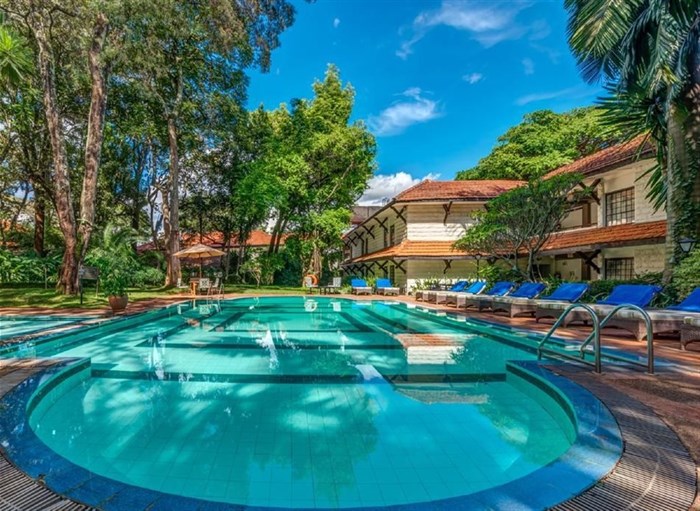
Indeed, it’s hard not to feel as though your troubles are far away in such a tranquil environment, with its lush landscape and colonial charm. Still, while the Southern Sun Mayfair feels like a tropical villa – complete with the soothing night-time sounds of streams and birds – it has all the modern amenities you’d expect from an upmarket hotel.
For example, in addition to assisting with transfers and activities, the Guest Relations desk is a useful resource for recommending restaurants, of which there are well over a dozen top ones nearby. A highlight is Fogo Gaucho, a Brazilian steakhouse ranked as one of the best in the city. Instead of getting up to get your food, the waiters bring the buffet to you (and you’re best to come hungry for all you can eat).
“If you want to go through the world, you’ll do it through Nairobi,” Khavere says of the culinary offerings. “And while traditional restaurants are not nearby, you can find the little kiosks selling nyama choma [Kenya’s version of the barbeque] just by walking around to see where the locals eat.”

Fortunately, the hotel’s fitness centre is right underneath the main restaurant and offers classes in Zumba, yoga, and more. Also, for guests visiting for a mental workout, the hotel has eight meeting rooms that can accommodate conferences of up to 350 people depending on the seating style.
“Depending on the season, you’ll find a mix of guests,” Khavere explains. “January to April is more corporate guests and between June and September is more leisure guests, with honeymooners and people on safari for the big migration happening at that time. But conferencing is a big part; it’s what keeps most places afloat. And when it’s peak season, it’s back to back.”
That makes sense when you consider that the Greater Nairobi Metropolitan region contains four of the country’s 47 counties but generates about two-thirds of the country’s wealth.
Moreover, the city (sometimes given the nickname ‘Silicon Savannah’) is home to global organisations, ranging from the United Nations Environment Programme and the United Nations Human Settlements Programme to the African headquarters of top brands including Coca-Cola, General Electric, Google, IBM, and Toyota.
“Many international companies are setting up their offices here,” Khavere says. “That tells you there’s something about Nairobi. This is the hub.”
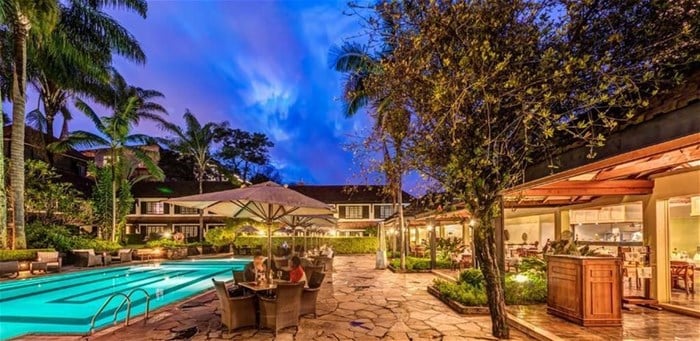
Eugene Yiga was a guest of Southern Sun Mayfair, Parklands Road, Nairobi.










